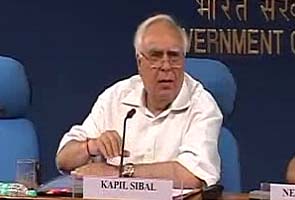The Indian Institutes of Technology (IITs) are all set to bring a new change in the pattern for
Joint Entrance Exam (JEE) which was conducted Every year across the country. The changed
exam pattern would be followed from the year 2013.
This is a combine exam of JEE and AIEEE .This is a single exam for entrance in all 13 IITs, 45
NITs, 5 IISc and Colleges under AIEEE.It is expected 150000 student appear for this exam.
The new pattern of JEE might include an aptitude test for the exam aspirants. The students will
have to crack this aptitude test consisting of questions based on reasoning and all other subjects
that the students have studied in their school level. The aptitude test would also include questions
related to subjects like physics, chemistry and maths.
The first part will be Aptitude Test and second part will Test Of Subjects (Physics, Chemistry,
Mathsmatics).
This arrangement has been proposed with an aim to reduce the pressure on the students.Students
have done well in 10+2 if they want to creak higher rank in exam.This step get moved students
towards Schools again.
There are 42 state boards and because of this reason, some kind of uniformity has to be
established to match the performance of the individual students (in their class XII)
with each other.
It is an extremely tough task to bring about uniformity in the percentages secured by the students
in their class XII results as the percentage secured by a student in one state board varies from the
percentage secured by some other student in other state board.
As different states have different boards and there are only two Central boards – CBSE and
ICSE, it will be a difficult task to establish uniformity in the percentages achieved by an
individual student when comparing his performance with the other individuals.
INDIAN SCIENCE- ENGINEERING ELIGIBILITY TEST (ISEET)
Date Of Exam :April / May, 2013
Governing Boby :
CBSE Will Conduct The ISEET-2013 Exam.Under The Direction Of Director IIT
Kanpur,Academic Committe Will Took Eyes On Whole Procedure.
Exam Pattern/Scheme : ISEET Will Divide Into Two Part –
PaperΙ: ISEET – Main | PaperΙΙ: ISEET – Advance
ISEET – Main : ISEET-Main Will Be A Test Of
- Critical Thinking
- Logical Reasoning
- Mantal Ability
ISET – Advance : ISET-Advance Will Be Test Of
– Basic Science And Engineering
– Physice/Chemistry/Maths
Note : Both Paper ISAT-Main And ISET-Advance Will Held On Same Day.60%
Weightage Of ISET Test And 40% Weightage Of ΧΙΙ Will Decide The Rank.
Attention all IIT aspirants!!! From the year 2013, the whole new change will be in IIT JEE exam
pattern. There will be an aptitude test consisting of questions based on reasoning and all other
subjects that you have studied in your schools like physics, chemistry and maths. So Prepare
yourself accordingly if you are preparing for IIT 2013.All the Best!!!
You gain .5/100 points for scoring
1% more in the boards. However, for each 1000 ranks you get more than 1/100 points in the top
5000 rank region(the old IITs cutoff). So JEE is going to play a more decisive role
than the boards, but a 94-95% makes life much easier. Work hard to get at least 88%(90
percentile) in the boards and give your best for JEE. Guys shaping up for a top 500 rank can
afford to get around 85%(don't sue me for this ;) ), but the rest need to be in excess of 90%
to have a fair chance. Note that the percentile vs percentage distribution will change if people
focus more on the boards. So don't take the boards lightly and try to build an advantage before
JEE.
Another fall-out of the new pattern might be a virtual state quota. As the top x% students of each
state will be at the same level, states like Rajasthan, Delhi & AP, which produce most of the
IITians will be at a slight disadvantage as far as the board percentiles are concerned. Even
the CBSE & ICSE boards which tend to have brighter students than the state boards might be
a curse for their students.
As far as student-stress levels are concerned, they are bound to shoot up. Earlier, one would just
focus on JEE, knowing that they had back-up in the form of AIEEE, BITSAT & state exams.
One didn't need to care about the boring board exams and just needed to ensure that they got
more than the qualifying score. Now, one has to work for the boards and prepare for a be all to
end all exam. One bad day and you are in deep trouble. God knows what Sibbal is trying to achieve.
This is only a possible and most likely criteria though no official statement has been given.
















